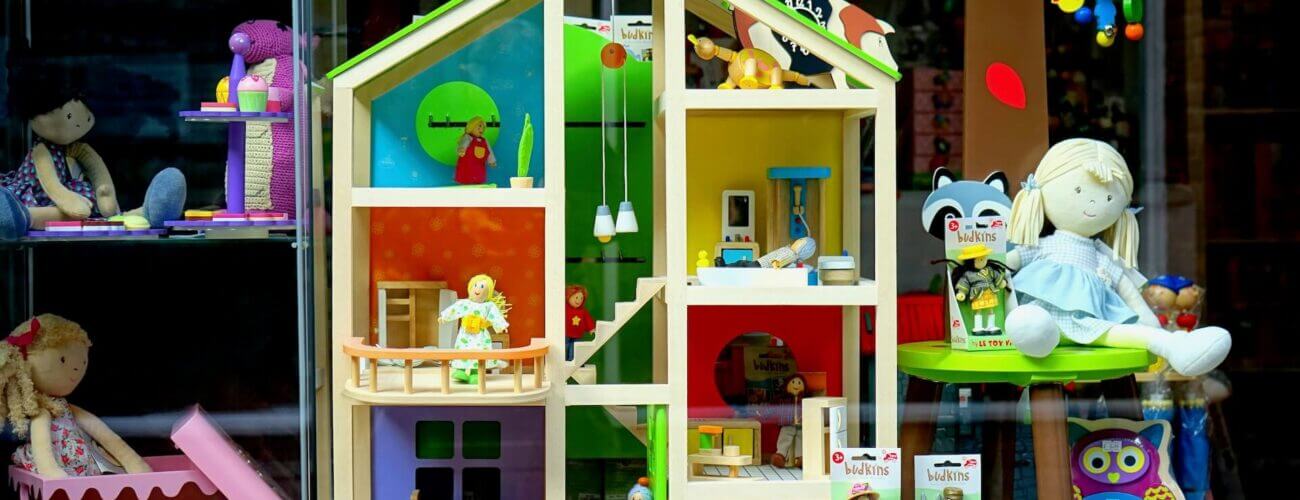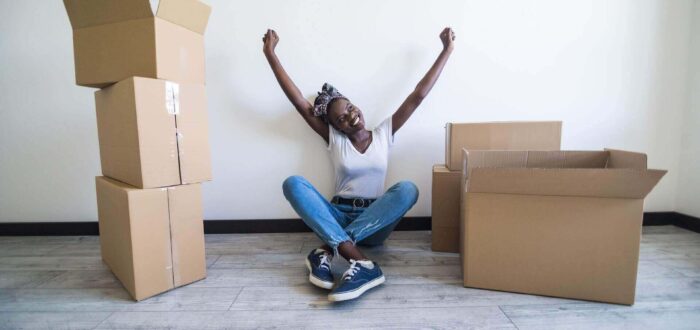

How to Pack Toys for Moving Across the Country
Posted in How-to on March 31, 2022
Relocating can be quite a stressful event for the entire family. When moving across the country, you will want to help your children adjust to the new circumstances as best as you can, and their toys can help a lot. Therefore, knowing how to pack toys for moving can be extremely useful. As with any other objects, they can be easily damaged if packed incorrectly.
Knowing How to Pack Toys for Moving Cross-Country Is Important
If you are relocating to a new home with kids, toys will most certainly be on the list of essentials. Although it may seem to you that they can just be stuffed into boxes, in reality, it is not like that. Your child’s favorite playthings can be delicate and consist of many small parts that can get lost when moving cross-country. Hence, these long-distance moving tips can prove to be quite useful. In this article, we will examine the following:
- What packing materials you need,
- How to pack properly,
- What to do with unnecessary items.
However, always keep in mind that professional assistance is available, and you should definitely consider cross-country moving services if you have the means.
How to Wrap a Stuffed Animal and Similar Toys? Packing Materials Are Essential for the Protection of Your Child’s Dolls
In order to ensure safe transportation, appropriate packing materials are absolutely crucial. Moreover, in case you need to use storage services, such materials will protect your items in storage units. Let us see what relocating supplies are necessary when moving across the country:
- Boxes,
- Protective paper or bubble wrap,
- Plastic zip bags,
- Plastic tape and scissors,
- Markers and stickers.
Keep in mind that you will not have to worry about these materials when hiring the packing service of professional cross-country movers. Here is a video with tips on what materials to use when transporting a valuable toy.
When Preparing Items Like Toys for Long-Distance Moving, Boxes of Different Sizes Are Required
You possibly think that it is enough to get a few big boxes and fill them. True, you could save money for relocation by stuffing everything in one huge box. However, you’ll probably end up spending a lot more replacing broken and lost things once you have moved to a new state.
Different toys are made from different materials, they vary in size, and many have a lot of removable parts. According to the characteristics of items, similar ones should be placed together in a box. Therefore, it is best to have small, medium, and large boxes at your disposal if you want to move everything safely.
When Moving Stuffed Animals and Other Toys, You Have to Pack Everything Carefully
There is not much to learn about how to wrap a stuffed animal, but people tend to be lazy. One of the most frequent relocating mistakes is not preparing your children’s playthings for transportation. If you don’t wish to get packing services from long-distance movers, let us see what needs to be done in this situation:
- First, cover the bottom of the box with protective material. There should be at least one layer of paper or bubble wrap that will act as a cushion. Once the container is full, any gaps between the objects should be filled with crumpled protective paper.
- As mentioned above, it is not wise to be moving stuffed animals with something that can potentially cut their fabric. Therefore, according to the types and sizes, place them in appropriate crates.
- Clean everything before the actual relocation starts. Your kids’ belongings can get quite messy over time. Cross-country moving services can even sometimes decline to move some objects if they are too dirty. Finally, unpacking will be much smoother if everything is cleaned beforehand.
- Things that have a lot of small parts, like a Lego set, should be placed in zip bags. In that way, the chances of anything getting lost during transportation will be reduced to a minimum.
- Most of your children’s playthings can be considered to be fragile objects. Therefore, it is a good idea to wrap each item with at least one layer of protective covering before placing them in a container. Especially so if that item has some special sentimental or material value.
- Disassemble everything you can – the most common piece of advice given by any qualified long-distance movers. Make sure that all the larger ones like dollhouses and rocking horses are dismantled into smaller parts.
- You should label everything. If an item has been disassembled, label the containers appropriately. This is especially important for containers with smaller parts. You will want to know immediately where all the parts go when unpacking. Also, it is always smart to use “fragile” labels on crates.
Relocating Unnecessary Things Is Never a Sensible Course of Action
Home possessions accumulate over a certain period of time, and that goes for your kids’ playthings as well. It is best to decide what to get rid of when relocating before cross-country movers come on the date of your move. You can possibly organize a garage sale, as additional cash is always needed. However, in this situation, we must say that donation is always the most humane thing to do.

When Packing for Kids, Remember That Your Child’s Favorite Should Always Accompany Them
Relocation is indeed a strenuous procedure. There will be a lot of stuff to worry about at the same time, and you will want to make your relocation as efficient as possible. However, when packing for kids, do not forget to leave a toy or two out, preferably the ones that they love the most. Your children will also feel a lot of anxiety about relocation, and their favorite playthings can help them cope with this situation.
FAQ
What Type of Boxes or Containers Should I Use to Pack Toys?
Use small boxes to pack smaller toys, such as action figures, dolls, and games, and medium boxes to pack larger toys, such as stuffed animals and puzzles. You can also choose to use plastic containers with lids to pack small, loose toys, such as building blocks and plastic figurines.
How Do I Ensure the Toys Are Protected During the Move?
Here are some tips to ensure that toys are protected during a move:
- Pack toys properly – pack toys in sturdy boxes and use packing materials such as bubble wrap, packing paper, and foam peanuts to cushion and protect them,
- Label boxes clearly – it’s necessary to indicate that they contain delicate items,
- Load boxes carefully – when loading boxes into the truck, place them securely against the walls and in between larger items to prevent shifting during transit,
- Hire professional long-distance movers – consider hiring professionals who have experience handling fragile items, and who can provide additional protection for your toys during transport.
How Should I Pack Fragile Toys to Prevent Damage?
You will need boxes, bubble wrap, packing paper, foam peanuts or other cushioning materials, and tape. Wrap each fragile toy individually in bubble wrap, making sure to cover all sides, including delicate areas such as joints, legs, and arms. Fill any empty spaces in the box with cushioning materials to prevent toys from shifting during transit.
Close the box and secure it with tape, making sure that the seams and edges are well sealed. Label the box “Fragile” and mark it with the contents. Pack boxes carefully into the truck.
Should I Keep Toys in Their Original Packaging or Repack Them?
If the original packaging is in good condition and provides adequate protection for the toy, you can keep it in the original packaging. However, if the original packaging is damaged or worn, you may want to consider repacking the toy in a new, sturdy box with additional cushioning materials to provide added protection during transit.
How Can I Make Packing and Unpacking Toys More Efficient?
Give yourself plenty of time to pack and unpack, so you can take your time and do a thorough job. Sort and organize toys by type, size, and fragility, so you can pack similar items together and make the most of your packing materials.
At the same time, try to pack toys by room, so you can unpack them in the correct room at your new home and avoid having to move boxes around. In the end, consider hiring professional cross-country movers who have experience packing and moving toys, and who can help you get the job done quickly and efficiently.
What Should I Do With Large Toys or Ride-on Toys?
If the toy can be disassembled, do so to reduce its size and make it easier to pack and transport. Label each part and keep screws, bolts, and other small parts together in a labeled plastic bag. However, if the toy is too large to fit in a box, protect it with backing materials and secure it to a pallet with ropes or straps to prevent shifting.
How Should I Label Boxes Containing Toys for Easier Unpacking?
Label the boxes with the room they belong in, so you can easily unpack them in the correct room at your new home. You should also label the boxes with the type of toys they contain, such as “Legos”, “Dolls”, or “Action Figures”.
If the toys are delicate or breakable, mark the boxes “Fragile” to indicate that they need to be handled with care. In the end, label multiple sides of the boxes, so you can easily identify the contents from any direction.
Should I Pack All Toys Together or Separate by Type?
The decision to pack your toys together or separate them by type is ultimately up to you. If you’re looking for a way to make the process more organized and efficient, separating your toys into categories can help you find what you need quickly when unpacking. However, if you have limited storage options when packing, boxing them up all together might be the best option -as long as they are properly protected.
Can I Pack Toys With Clothing or Should They Have Their Own Boxes?
It is generally best to pack toys in their own boxes, rather than packing them with clothing or other items. Toys can be quite bulky and awkward to move, so it’s important to have a dedicated space for them while you’re transporting them. Additionally, storing toys separately from other belongings helps keep the toys organized during the move, and makes it easier to find what you need when unpacking
How Should I Pack Battery-Operated Toys?
When packing battery-operated toys, the most important thing is to make sure they are shut off and their batteries are removed. This will help prevent any potential damage or hazards caused by the toy being accidentally turned on in transit. Additionally, it’s a good idea to secure any small parts that might become loose during transportation. Wrap them in bubble wrap or tissue paper, and place them in a secure container.




